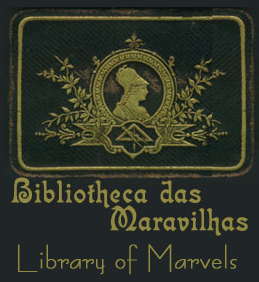LIBRARY OF MARVELS
Library of Marvels
Through this project, I'm interested among other things, in examining the cultural impact and possibilities created by computers as machines that can generate books and libraries.
The Library of Marvels is a collection of "artist's e.books" on the web. These books are electronic narratives that use several kinds of media and processes: image, sound, words, texts, movement, games, simulation, programming, and interactivity or the simulation thereof. In addition toexamining the cultural impact and possibilities created by computers as machines that can produce books and libraries, the Library of Marvels, in a way, also is part
of the positive quality of globalization because it seeks to disseminate the writings of important authors from all continents.
The library got started in 1999, and already contains six volumes: "White and Black, Reflections on Fog" (1999) - , the "Book of Sand" (2001), "The Psychiatrist, Net.art / Web.art and other stories" (2002), "The Newest Song of Exile: Sabiá Virtuality" (2003), "Viewing Axolotls"(2004) and Tales from my balcony / Alice in the" wonderbalcony". The starting point of my research is always SEEING. Whether we are looking at fog (1999), looking on in horror (2001), looking at madness (2002), looking at culture (2003) or viewing axolotls, which once again involves looking at fog, or the impossibility of seeing clearly, but with a different focus (2004). Alice in the "Wonderbalcony", the last one looks at childhood, Lewis Carrol, meaning of words and nonsense.
Some words on "Viewing Axolotls":
Philosophically speaking, according to Merleau-Ponty, the world is what we see, but we must learn to see it. In this sense, my main every-day occupation is learning to see. And yet...
Everyone sees the world in his or her own likeness and therefore the dialogue between "Me and the World" is different from person to person. We can illustrate this best with the metaphor of colors: Who is right? Color-blind people who see red as green and vice versa, or so-called normal people who see red as red and green as green? Do we side with the latter because they are the majority? It's said that some animals see the world in black and white. What colors would an extraterrestrial see in our world? In fact, what color is our world, if colors themselves are just classifications?
It seems we have established an impasse: Is reality possible? Can it be possible, as phenomenology has suggested, for art to make the invisible visible? Could Reality be a Fantastic Fantasy?
What about the new media? And the new narratives?
The pixels light up and a caption appears: "Viewing Axolotls…" or ,,,
The magic of a narrative is recreated in this world, and immediately everyone takes on the appropriate stance to follow it: the "view" of the spectator-subject (with all his/her blindness) and the gaze emitted from the electronic book-object (with all its slyness) clash in a duel of interpretation, simulation and interactivity. A woman who, because she loved so much or looked so much, turns into an axolotl. "Dreams are a point of view. They are a place from where one sees. Nightmares are a way of looking at the world in the eyes of the dreamer." In other words, dreams let us see otherness, while in our nightmares we find the fear the "other" can inspire. In the fictional world, the narrator can direct our gaze to the viewpoint of dreams, while simultaneously turning that gaze to the nightmare of entering an aquarium, an unknown watery world. This move could bring an end to the blindness inherent to all views, enabling them to distance themselves reflexively and see themselves while looking (or not)…
